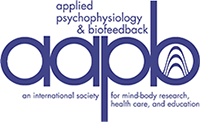Seeing is Believing: Biofeedback as a Tool to Enhance Motivation for Cognitive Therapy
Cognitive behavior therapy (CBT) as applied by behavioral scientists includes strategies for changing negative cognitions that contribute to depression and anxiety. Biofeedback is a useful strategy to demonstrate to clients the mind (cognitive, psychological) to body (physiological) interaction. For example, a cognitive, psychological reaction to a stimuli results in a physiological effects as illustrated by changes in skin conductance or muscle tension. A case example is used to demonstrate an anticipatory psychophysiological response resulting in covert activity of the forearm as a client simply imagines playing the piano.

The effect on SC level of hearing the instruction that someone will give her a kiss.

The covert SEMG increase in forearm SEMG as the participant imagined playing the piano.

Erik Peper

Saiko Nemoto

I-Mei Lin

Richard Harvey
Contributor Notes
